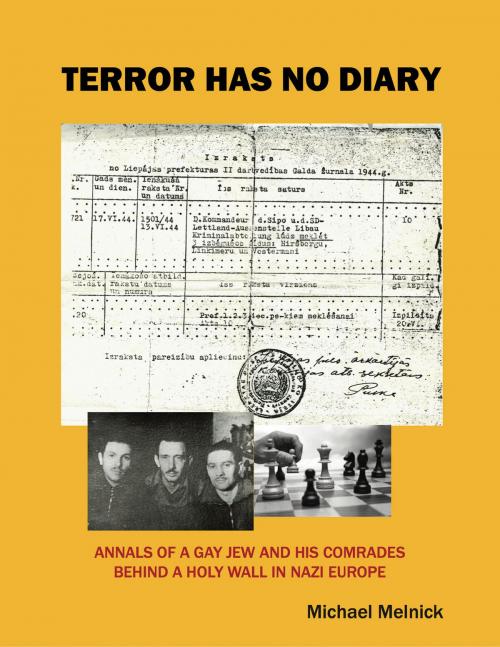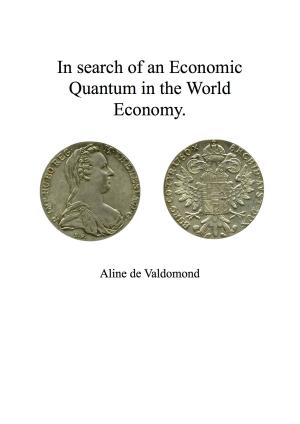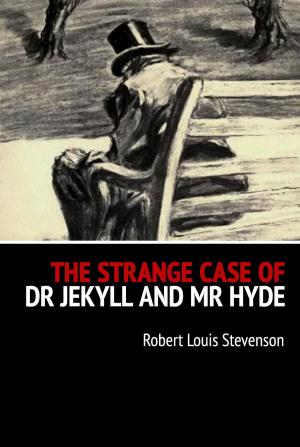| Author: | Michael Melnick | ISBN: | 9781456617325 |
| Publisher: | eBookIt.com | Publication: | June 23, 2013 |
| Imprint: | eBookIt.com | Language: | English |
| Author: | Michael Melnick |
| ISBN: | 9781456617325 |
| Publisher: | eBookIt.com |
| Publication: | June 23, 2013 |
| Imprint: | eBookIt.com |
| Language: | English |
Of the 7000 Jews living in the Baltic seaport of Libau (Liepaja), Latvia when the Germans invaded on June 21, 1941, only 200 remained alive when the city was liberated May 9,1945. Of these, maybe two dozen were hiding within Libau itself. This story is about 12 of them. Eleven adults were in the care of Robert and Johanna Sedols who hid them in a cellar behind a false wall constructed with the "holy bricks" of the demolished Choral Synagogue; the lone child was cared for by a widow, Otilija Schimelpfenig, in the secure comfort of her home. For their courage and moral stature, the Sedols and Mrs. Schimelpfenig are memorialized as "Righteous Among the Nations" at Yad Vashem. How these 12 Jews arrived at their hiding places, and how they endured until liberation, is a remarkable story, one of miracles. Inscrutable miracles, cast naked upon the ruins by men and women of courage and cunning, not saints.
The narrational vigor of the telling reflects the striking skill of a sagacious diarist, Kalman Linkimer. When the Germans invaded Libau, Kalman was just shy of 30. He was already a veteran of the Latvian Army, a broadly educated teacher and poet who tutored wealthy gymnasium students, and an habitué of cafes where he endlessly played chess, sipped espresso, and smoked cigarettes. And more...he was a gay, religious Jew who was an athlete and an avid leftist. Faced with a defiled social contract, Kalman threw off the mask of the gentle aesthete and exposed his true grit. He conceded to no one the mission of chronicling the terror; he was consumed with the need to transmit the pain of evil to those who were not there. Kalman Linkimer was a moral witness.
Kalman's chronicle begins on Erev Yom Kippur, 26 September 1944: "Just eleven of us now, buttoned up in a cellar beneath the heat of baking ovens...." With this painful metaphor as backdrop, Kalman recounts how they all came to be there; the twists and turns through the endless night of murder, torture and humiliation inflicted by evil actors entirely empty of empathy; the mass murders in the dunes of Skede, the liquidation of the ghetto, the escapes, the events that taught each of them that a drowning man is not troubled by rain.
Two-thirds into the narrative, Kalman returns to the "present." Far from growing familiar with their privileged prison, they behold it every moment with a new horror. The hunger, the illness, the conflicts, and the bombing ever more near. The bipolar illusions, the catatonic routine, and the adulterous entanglement. Their quarantine a panic room bricked in, their world narrows in increments only animals know....Liberation arrives nearly four years after the nightmare began. They emerge from the cellar malnourished, maladroit, and cautiously hopeful. The lone child, wearing a white hat and a flowered dress, stands in the Spring sunshine. Only she is destined to fully heal.
The narrational vigor of the telling reflects the striking skill of a sagacious diarist, Kalman Linkimer. When the Germans invaded Libau, Kalman was just shy of 30. He was already a veteran of the Latvian Army, a broadly educated teacher and poet who tutored wealthy gymnasium students, and an habitué of cafes where he endlessly played chess, sipped espresso, and smoked cigarettes. And more...he was a gay, religious Jew who was an athlete and an avid leftist. Faced with a defiled social contract, Kalman threw off the mask of the gentle aesthete and exposed his true grit. He conceded to no one the mission of chronicling the terror; he was consumed with the need to transmit the pain of evil to those who were not there. Kalman Linkimer was a moral witness.
Kalman's chronicle begins on Erev Yom Kippur, 26 September 1944: "Just eleven of us now, buttoned up in a cellar beneath the heat of baking ovens...." With this painful metaphor as backdrop, Kalman recounts how they all came to be there; the twists and turns through the endless night of murder, torture and humiliation inflicted by evil actors entirely empty of empathy; the mass murders in the dunes of Skede, the liquidation of the ghetto, the escapes, the events that taught each of them that a drowning man is not troubled by rain.
Two-thirds into the narrative, Kalman returns to the "present." Far from growing familiar with their privileged prison, they behold it every moment with a new horror. The hunger, the illness, the conflicts, and the bombing ever more near. The bipolar illusions, the catatonic routine, and the adulterous entanglement. Their quarantine a panic room bricked in, their world narrows in increments only animals know....Liberation arrives nearly four years after the nightmare began. They emerge from the cellar malnourished, maladroit, and cautiously hopeful. The lone child, wearing a white hat and a flowered dress, stands in the Spring sunshine. Only she is destined to fully heal.
Of the 7000 Jews living in the Baltic seaport of Libau (Liepaja), Latvia when the Germans invaded on June 21, 1941, only 200 remained alive when the city was liberated May 9,1945. Of these, maybe two dozen were hiding within Libau itself. This story is about 12 of them. Eleven adults were in the care of Robert and Johanna Sedols who hid them in a cellar behind a false wall constructed with the "holy bricks" of the demolished Choral Synagogue; the lone child was cared for by a widow, Otilija Schimelpfenig, in the secure comfort of her home. For their courage and moral stature, the Sedols and Mrs. Schimelpfenig are memorialized as "Righteous Among the Nations" at Yad Vashem. How these 12 Jews arrived at their hiding places, and how they endured until liberation, is a remarkable story, one of miracles. Inscrutable miracles, cast naked upon the ruins by men and women of courage and cunning, not saints.
The narrational vigor of the telling reflects the striking skill of a sagacious diarist, Kalman Linkimer. When the Germans invaded Libau, Kalman was just shy of 30. He was already a veteran of the Latvian Army, a broadly educated teacher and poet who tutored wealthy gymnasium students, and an habitué of cafes where he endlessly played chess, sipped espresso, and smoked cigarettes. And more...he was a gay, religious Jew who was an athlete and an avid leftist. Faced with a defiled social contract, Kalman threw off the mask of the gentle aesthete and exposed his true grit. He conceded to no one the mission of chronicling the terror; he was consumed with the need to transmit the pain of evil to those who were not there. Kalman Linkimer was a moral witness.
Kalman's chronicle begins on Erev Yom Kippur, 26 September 1944: "Just eleven of us now, buttoned up in a cellar beneath the heat of baking ovens...." With this painful metaphor as backdrop, Kalman recounts how they all came to be there; the twists and turns through the endless night of murder, torture and humiliation inflicted by evil actors entirely empty of empathy; the mass murders in the dunes of Skede, the liquidation of the ghetto, the escapes, the events that taught each of them that a drowning man is not troubled by rain.
Two-thirds into the narrative, Kalman returns to the "present." Far from growing familiar with their privileged prison, they behold it every moment with a new horror. The hunger, the illness, the conflicts, and the bombing ever more near. The bipolar illusions, the catatonic routine, and the adulterous entanglement. Their quarantine a panic room bricked in, their world narrows in increments only animals know....Liberation arrives nearly four years after the nightmare began. They emerge from the cellar malnourished, maladroit, and cautiously hopeful. The lone child, wearing a white hat and a flowered dress, stands in the Spring sunshine. Only she is destined to fully heal.
The narrational vigor of the telling reflects the striking skill of a sagacious diarist, Kalman Linkimer. When the Germans invaded Libau, Kalman was just shy of 30. He was already a veteran of the Latvian Army, a broadly educated teacher and poet who tutored wealthy gymnasium students, and an habitué of cafes where he endlessly played chess, sipped espresso, and smoked cigarettes. And more...he was a gay, religious Jew who was an athlete and an avid leftist. Faced with a defiled social contract, Kalman threw off the mask of the gentle aesthete and exposed his true grit. He conceded to no one the mission of chronicling the terror; he was consumed with the need to transmit the pain of evil to those who were not there. Kalman Linkimer was a moral witness.
Kalman's chronicle begins on Erev Yom Kippur, 26 September 1944: "Just eleven of us now, buttoned up in a cellar beneath the heat of baking ovens...." With this painful metaphor as backdrop, Kalman recounts how they all came to be there; the twists and turns through the endless night of murder, torture and humiliation inflicted by evil actors entirely empty of empathy; the mass murders in the dunes of Skede, the liquidation of the ghetto, the escapes, the events that taught each of them that a drowning man is not troubled by rain.
Two-thirds into the narrative, Kalman returns to the "present." Far from growing familiar with their privileged prison, they behold it every moment with a new horror. The hunger, the illness, the conflicts, and the bombing ever more near. The bipolar illusions, the catatonic routine, and the adulterous entanglement. Their quarantine a panic room bricked in, their world narrows in increments only animals know....Liberation arrives nearly four years after the nightmare began. They emerge from the cellar malnourished, maladroit, and cautiously hopeful. The lone child, wearing a white hat and a flowered dress, stands in the Spring sunshine. Only she is destined to fully heal.















